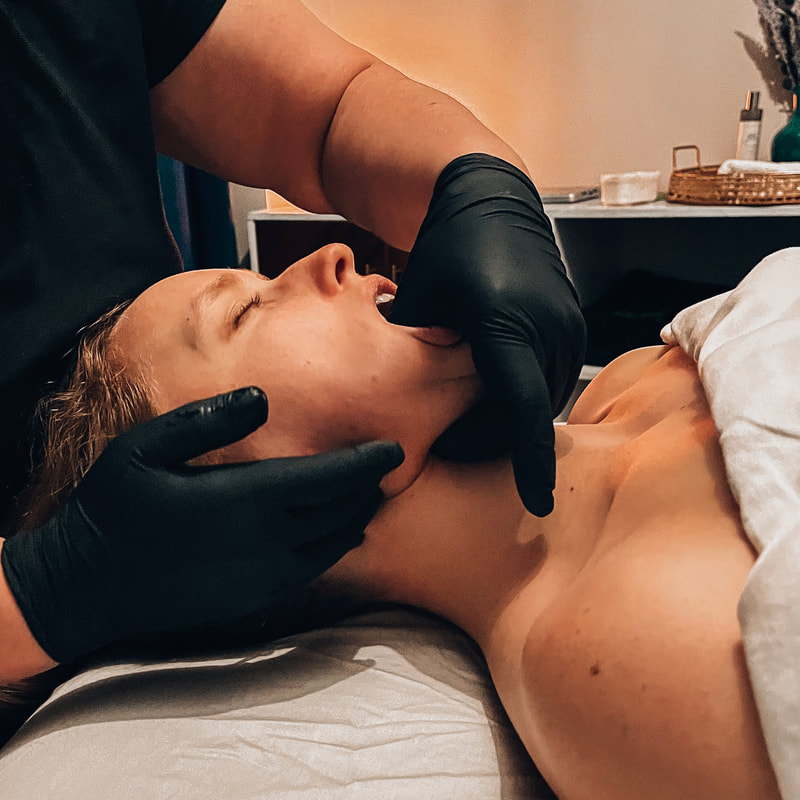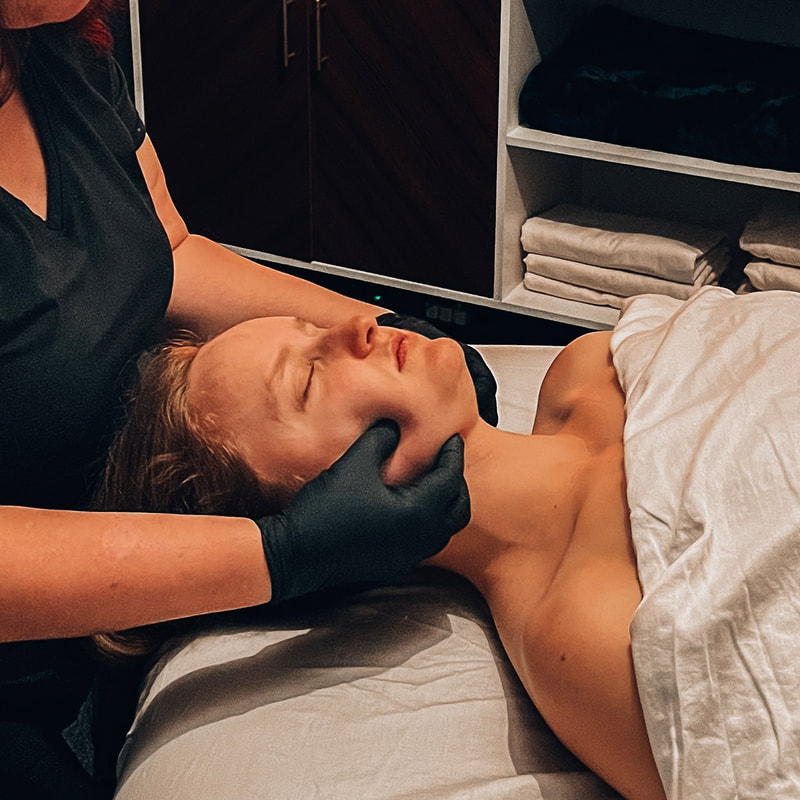Intraoral
is a massage therapy technique where your therapist will use a clean, gloved hand to massage the muscles inside of your mouth, allowing your therapist to adequately reach all of the muscles and areas that can be causing you pain and dysfunction. Intraoral work can help relieve symptoms caused by TMJ disorders (Temporomandibular joints aka the joints in front of each ear that connect your lower jawbone to your skull), headaches, sinus issues, neck, shoulder, and jaw pain, etc. Jaw pain is common and can be caused by a number of factors that leave your facial muscles feeling tender and sore - so our combo massage aims to help alleviate your pain over time with gentle, soothing massage.
What to expect:
Your therapist will first chat with you to assess your situation and ask a few questions (do grind your teeth? any jaw injuries?). You may be asked to move your jaw to gauge your range of motion. This helps determine your therapist's treatment plan to best help you.
Your therapist will continue to communicate with you during your massage to check in with how you're feeling, how the pressure is, and may ask you to move your jaw. Because your facial muscles are delicate, your therapist will use methodical, gentle strokes to treat your entire face, jaw, and hairline. From here, your therapist will move on to target your neck and shoulders, both front and back, using a combo of stretching, myofascial release, and/or trigger point therapy. It's very important to treat your entire affected area for best relief results.
Once you have experienced facial massage and jaw work with your therapist and feel comfortable, your therapist may integrate intraoral work into your massage. Your therapist will use their gloved hand to palpate your jaw muscles, facial bones, and gums inside of your mouth with a slow, light pressure.
What to expect:
Your therapist will first chat with you to assess your situation and ask a few questions (do grind your teeth? any jaw injuries?). You may be asked to move your jaw to gauge your range of motion. This helps determine your therapist's treatment plan to best help you.
Your therapist will continue to communicate with you during your massage to check in with how you're feeling, how the pressure is, and may ask you to move your jaw. Because your facial muscles are delicate, your therapist will use methodical, gentle strokes to treat your entire face, jaw, and hairline. From here, your therapist will move on to target your neck and shoulders, both front and back, using a combo of stretching, myofascial release, and/or trigger point therapy. It's very important to treat your entire affected area for best relief results.
Once you have experienced facial massage and jaw work with your therapist and feel comfortable, your therapist may integrate intraoral work into your massage. Your therapist will use their gloved hand to palpate your jaw muscles, facial bones, and gums inside of your mouth with a slow, light pressure.
|
Book a Simply Therapeutic Massage with Irina
|
|

